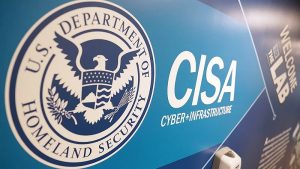Through the COVID-19 pandemic, state and local governments adapted to a distributed workforce overnight – requiring IT teams to learn how to move their services forward, efficiently and securely.
The Cybersecurity and Infrastructure Security Agency (CISA) is partnering with the National Cyber Security Alliance (NCSA), a public-private partnership dedicated to the cause, to lead the 17th annual National Cybersecurity Awareness Month starting today.
A two-part ransomware guide released yesterday by the Cybersecurity and Infrastructure Security Agency (CISA) and Multi-State Information Sharing and Analysis Center (MS-ISAC) directs cyber professionals on how to protect against and respond to attack.
Federal legislation to help strengthen the cybersecurity of state and local governments through a Department of Homeland Security grant program passed the House of Representatives on Sept. 30 – with impetus for the legislation coming from across the U.S. in the form of numerous ransomware and other attacks in recent years.
The Dothan City, Ala., School District announced the creation of a virtual help desk to provide technical support for devices provided by Dothan City Schools (DCS).
The vast majority of university students – 84 percent – are struggling with stress and anxiety caused by COVID-19, according to a study from META, a digital mental health platform for schools.
In anticipation of a fall semester full of hybrid and distance learning the University of Kentucky spent the summer overhauling its classroom technology campuswide.
Before most of the nation’s K-12 schools closed their doors in March, sending students to learn from home while the COVID-19 pandemic raged, school leaders confronted a job that no one imagined when the school year began. They had to facilitate remote work for hundreds or thousands of professional staff and remote learning for exponentially larger numbers of students – none of whom were used to working outside of the traditional school environment.
In a trend across the country, Duke University has moved to a blend of remote and hybrid learning. To keep remote students engaged, Duke’s Office of Information Technology (OIT) has deployed 50 Zoom carts for professors to use during their classes.
The National Association of State Chief Information Officers (NASCIO) announced the finalists for its State IT Recognition Awards.














